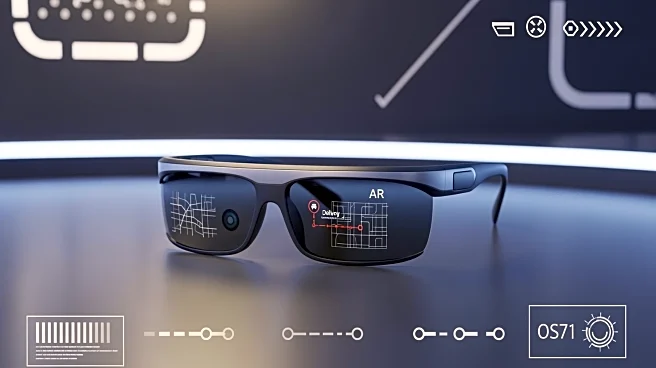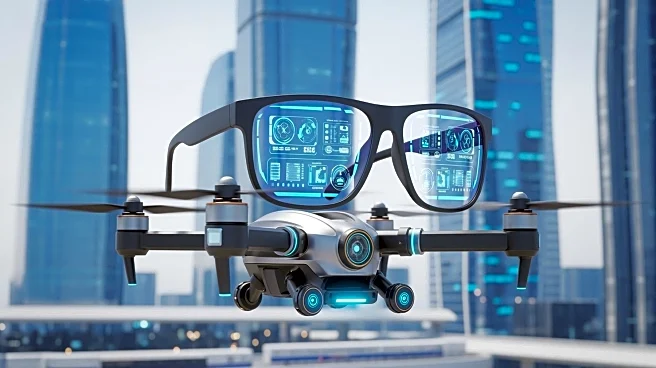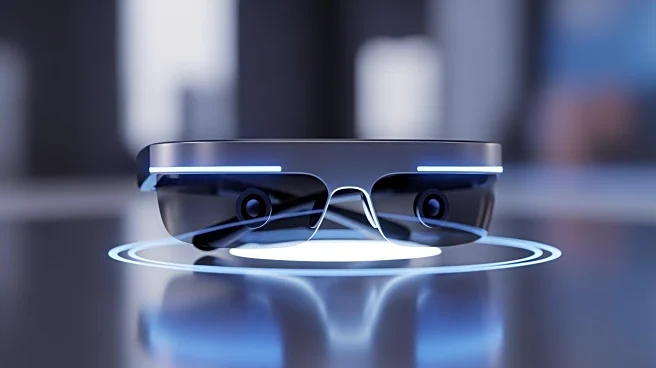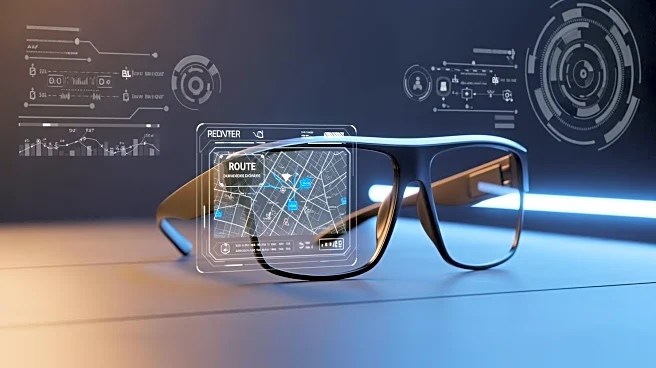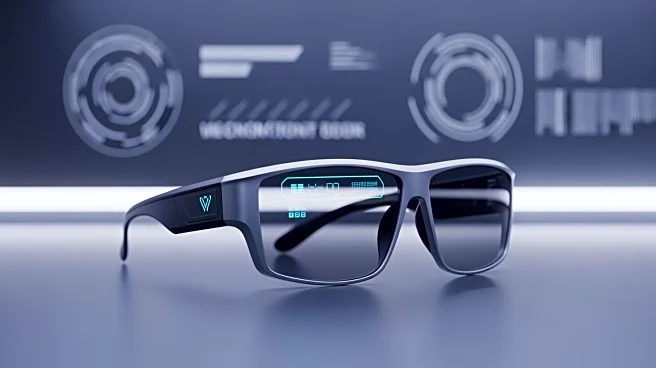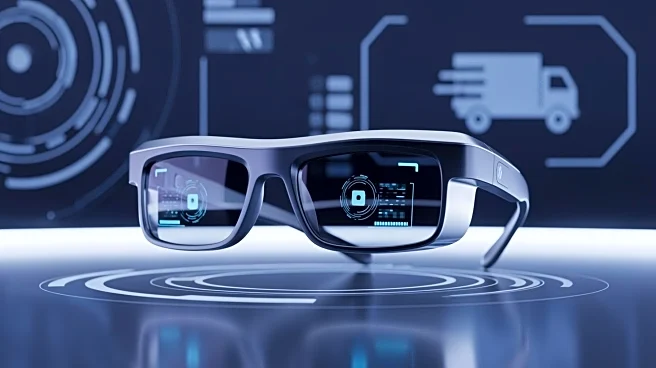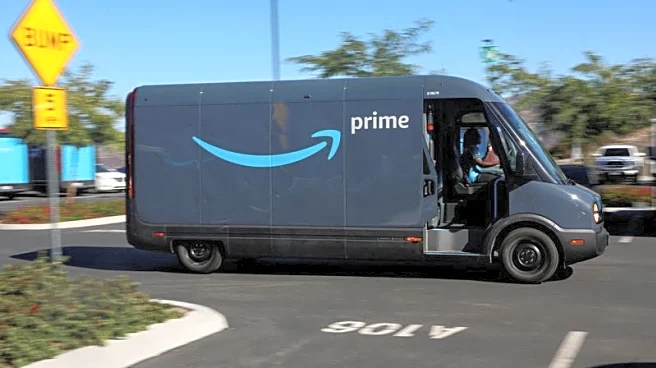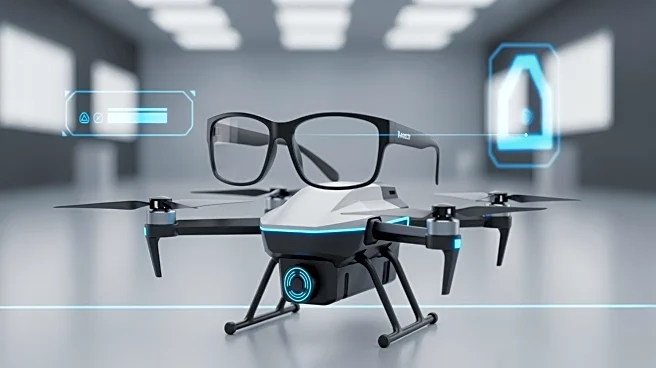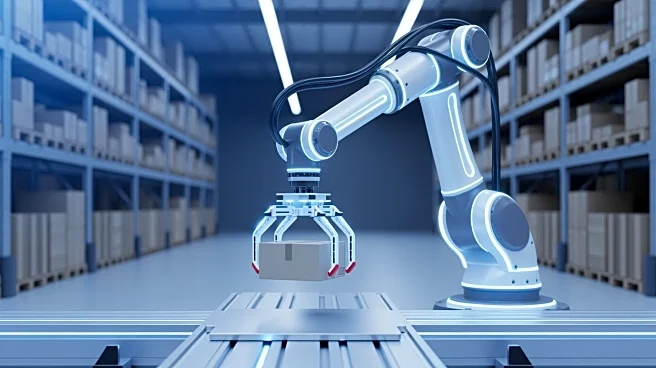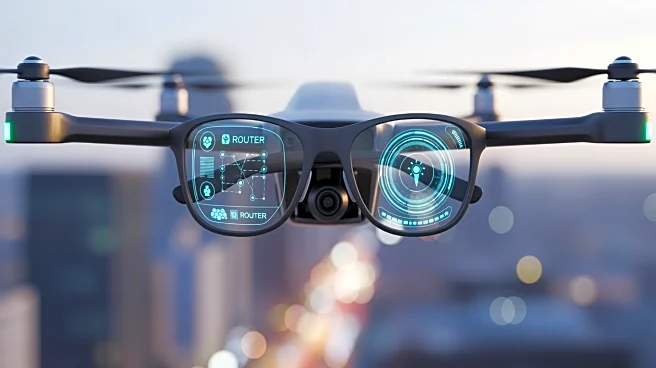What's Happening?
Amazon has initiated a pilot program to test augmented-reality (AR) glasses with contract delivery drivers across North America. Announced on October 22, 2025, the trial aims to transform AR from a consumer
gadget into a logistics tool, potentially speeding up delivery drop-offs and reducing driver search time. The AR glasses, which are part of the Galaxy-class headsets, cost approximately $1,800 and offer around two hours of battery life. The pilot is strategically timed before the peak shipping season, allowing Amazon to refine hardware, software, and workflow processes before a broader rollout. The company hopes that by minimizing search delays, the efficiency of delivery routes can be significantly improved.
Why It's Important?
This development is significant as it could reshape last-mile logistics, a critical component of the delivery process. By potentially reducing delivery times and improving accuracy, Amazon's use of AR glasses could lead to faster arrival windows and fewer misdelivered packages. The pilot also pressures AR hardware and software vendors to optimize battery life, form factors, and enterprise workflows. If successful, this initiative could prompt other retailers to adopt similar technologies, driving innovation in logistics and delivery services. However, the trial also raises questions about driver distraction, privacy, and safety, which unions and regulators may scrutinize.
What's Next?
If the trials demonstrate that AR can effectively speed up drop-offs, Amazon may expand the use of AR glasses across its delivery network. This could lead to other retailers piloting their own AR workflows, further integrating technology into logistics operations. Device manufacturers will likely focus on improving battery endurance and ergonomics to meet the demands of continuous use. Additionally, the industry may face debates over safety and privacy implications, as stakeholders assess the impact of AR on driver performance and customer data security.
Beyond the Headlines
The introduction of AR glasses in logistics could have broader implications for the technology sector, particularly in terms of hardware and software development. Companies that provide affordable, ruggedized headsets and developer tools may experience rapid growth as demand for AR solutions in commercial settings increases. Furthermore, the trial could influence the development of mapping and privacy controls, essential for secure commercial use. As AR becomes more integrated into logistics, it may also drive cultural shifts in how technology is perceived and utilized in everyday operations.
